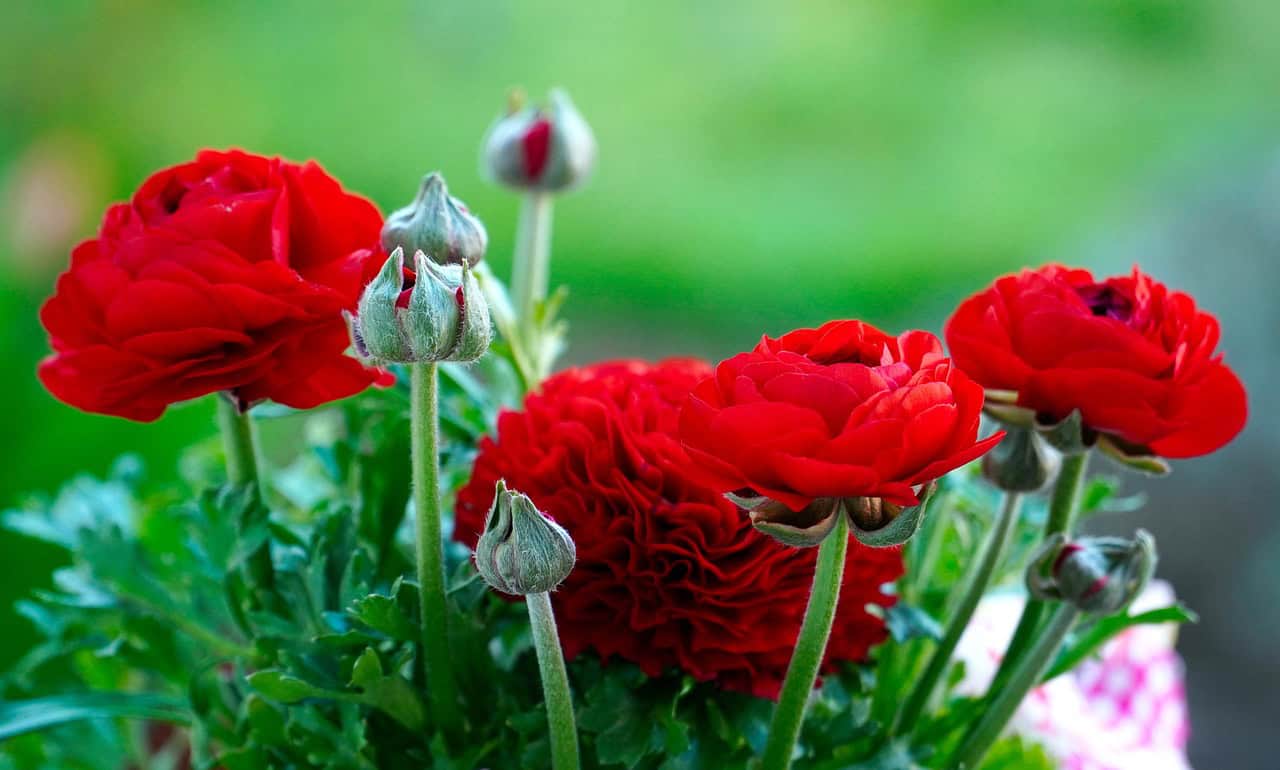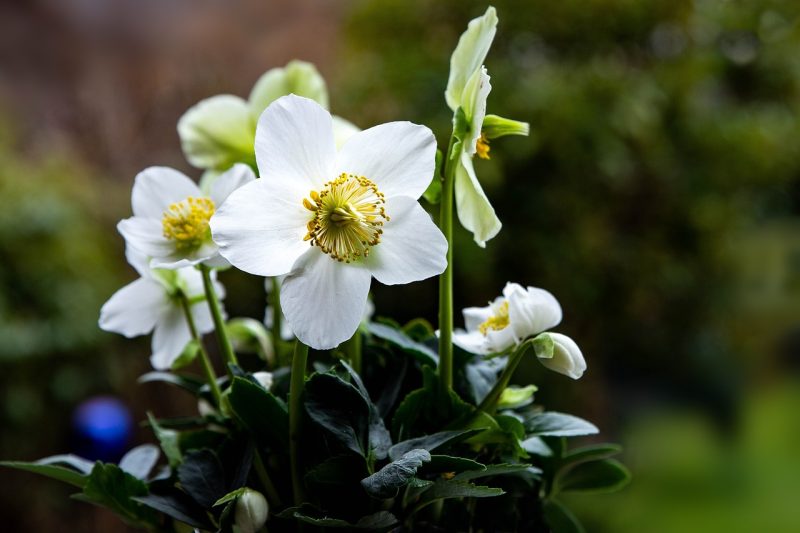As the cooler months descend upon Texas, the landscape transforms into a vibrant tapestry of color, thanks to the remarkable winter flowers that thrive in the cooler winter weather in Texas.
Cyclamen (Cyclamen spp.)
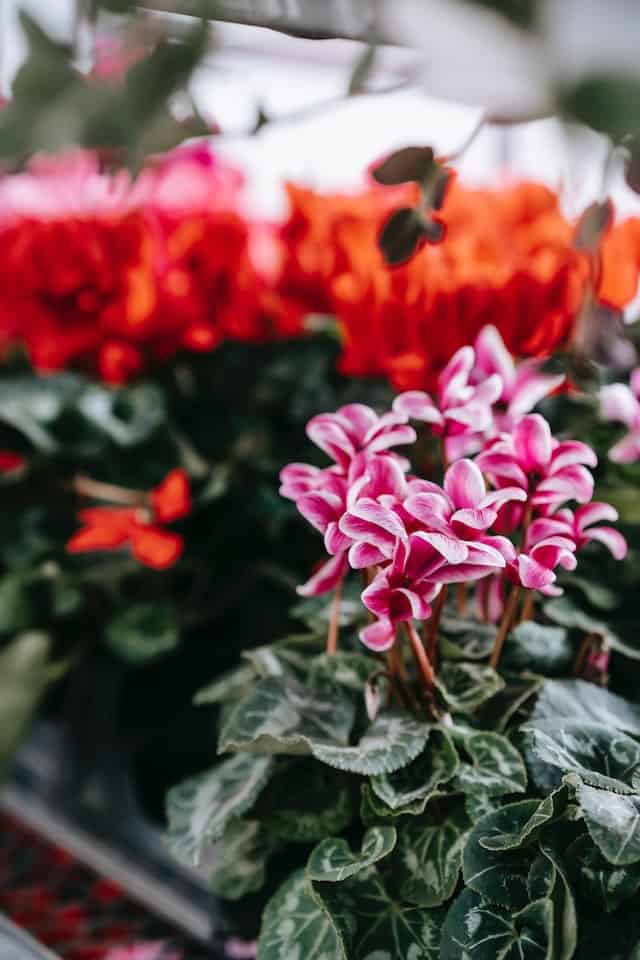
Cyclamen is a stunning choice for winter gardens, renowned for its unique, heart-shaped leaves and exquisite blooms, which can display colors ranging from soft pinks to deep reds and purples. Native to the Mediterranean region, these perennial plants flourish in the mild winters of Texas, often blooming from late fall through early spring.
One of the reasons Cyclamen stands out as a winter flower in Texas is its ability to thrive in shady areas, making it an excellent option for gardens under trees or along buildings. With the intense summer heat in mind, Cyclamen roots prefer cooler soil temperatures, which allows them to excel during the winter months.
These flowers require well-drained soil and moderate watering. Overwatering can lead to root rot, which is detrimental to their health. Additionally, Cyclamen benefits from a layer of mulch during colder spells, helping to insulate the roots while also keeping the soil moisture-friendly.
Moreover, the whimsical blooms of Cyclamen are not just a feast for the eyes; they can attract various pollinators such as bees and butterflies, enriching the ecosystem of the garden. Overall, the elegance and low maintenance of Cyclamen make it a deserving star in the lineup of winter flowers in Texas.
Winter Pansies (Viola spp.)

If you’re looking to add bursts of color to your winter garden, winter pansies are an ideal choice. Valued for their hardy nature and wide range of vibrant colors, pansies bloom from late fall all the way through early spring. They are often one of the first flowers to show their faces in winter, bringing optimism and warmth to a seemingly bleak landscape.
Winter pansies thrive in both sun and partial shade, making them incredibly versatile. Unlike many other winter flowers, pansies are tolerant of frost, enabling them to withstand the occasional freezing temperatures that Texas can experience during its winter months. They perform best when planted in well-drained soil enriched with organic matter, providing the nutrients necessary for robust growth.
One great aspect of growing pansies is their ability to produce more blooms when pinched back. Regular deadheading can promote new flower growth, keeping your garden vibrant throughout the season. Furthermore, pansies are not just ornamental; they can be used to flavor salads and desserts, providing both visual and culinary delight.
In Texas, the combination of pansies’ stunning colors and adaptability to varying garden conditions ensures their status as a favorite among winter flowers, enhancing both commercial landscapes and private gardens alike.
Petunias (Petunia spp.)
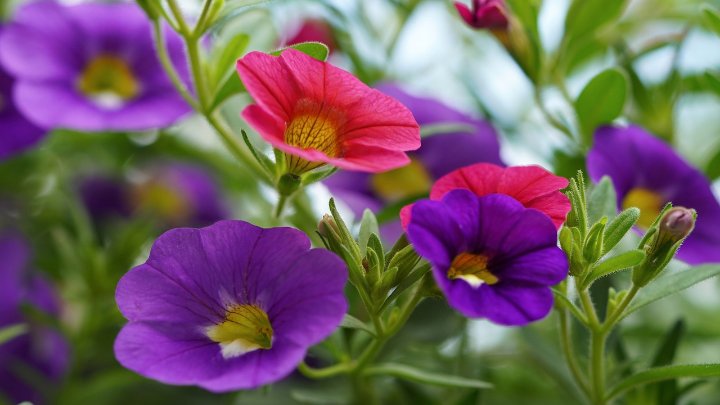
Another exceptional flower that holds its ground in Texas during winter is the petunia. Known for their large, trumpet-shaped blossoms and wide variety of colors, petunias can easily transform any space into a colorful spectacle. While these flowers are typically thought of as summer bloomers, certain varieties, particularly the wave petunias, can flourish in the winter months, especially in the southern parts of Texas.
Petunias prefer full sun and well-drained soil, thriving when planted in locations that receive ample sunlight throughout the day. Their ability to withstand cooler temperatures—though they prefer milder conditions—makes them an excellent choice for many Texan gardens. When planted in fall, petunias will often bloom continuously through the winter.
These flowers also benefit from regular deadheading, which encourages continuous blooming and keeps them looking fresh. In addition, employing a balanced fertilizer can enhance their growth and blooming period, ensuring they provide vibrant colors throughout winter.
What’s particularly exciting about petunias is their versatility; they can be used in hanging baskets, borders, or even as ground cover. The sprawling nature of certain petunia varieties makes them ideal for softening hard edges or filling in gaps in flower beds.
In summary, petunias are not only reliable winter performers in Texas, but their cheerful bursts of color and pleasant fragrance create an inviting atmosphere, making them beloved fixtures of winter gardens.
Snapdragons (Antirrhinum majus)
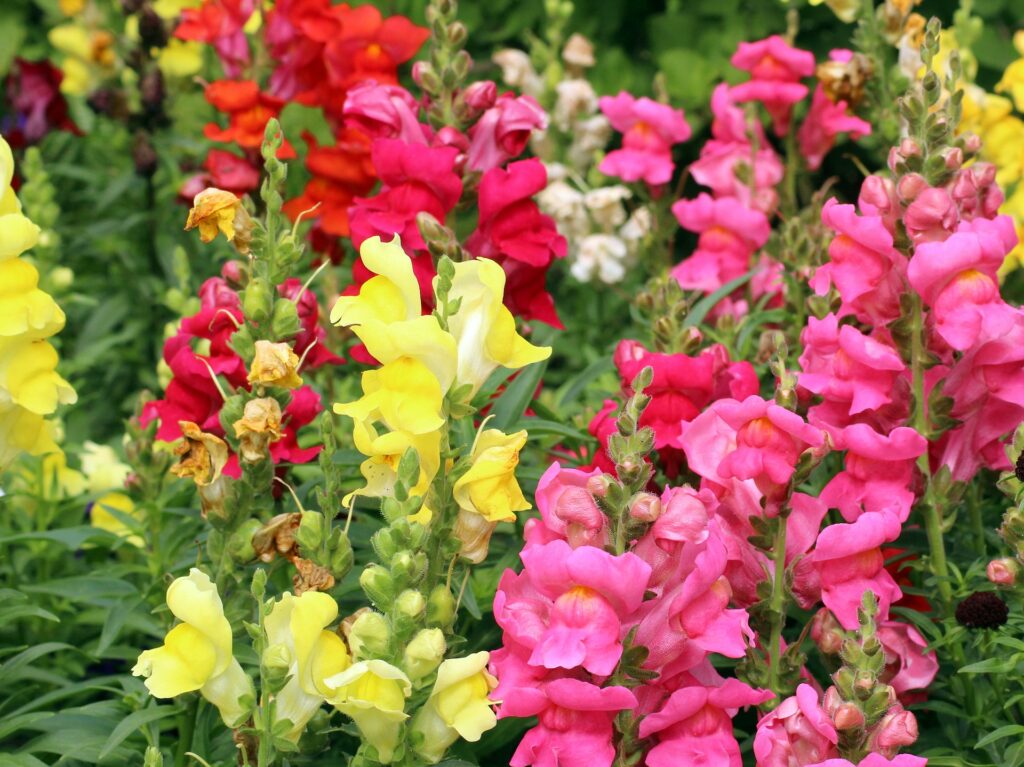
Snapdragons are iconic winter flowers that bring a splash of color and dimension to gardens across Texas. Known for their unique, dragon-shaped blooms, snapdragons come in a multitude of hues—from soft pastels to vivid brights—making them a popular choice for both informal and formal gardens.
One of the outstanding features of snapdragons is their impressive height variations, ranging from dwarf varieties that stand around 6 inches tall to towering plants that can reach up to 3 feet. This versatility allows gardeners to create layers in their flower beds, contributing to rich visual textures.
In terms of cultivation, snapdragons prefer moderate temperatures and thrive in well-drained soil enriched with organic matter. They can tolerate light frost, making them well-suited for the Texas winter, but are best planted in shaded areas to protect them from harsh afternoon sun. Regular watering is essential, particularly during dry spells, as snapdragons require consistent moisture to stay vibrant.
Additionally, snapdragons can attract beneficial insects such as pollinators, including bees and butterflies. Their enduring blooms and eye-catching stature make them a beloved choice for winter bouquets, adding elegance and allure to indoor arrangements as well.
Winter Honeysuckle (Lonicera fragrantissima)
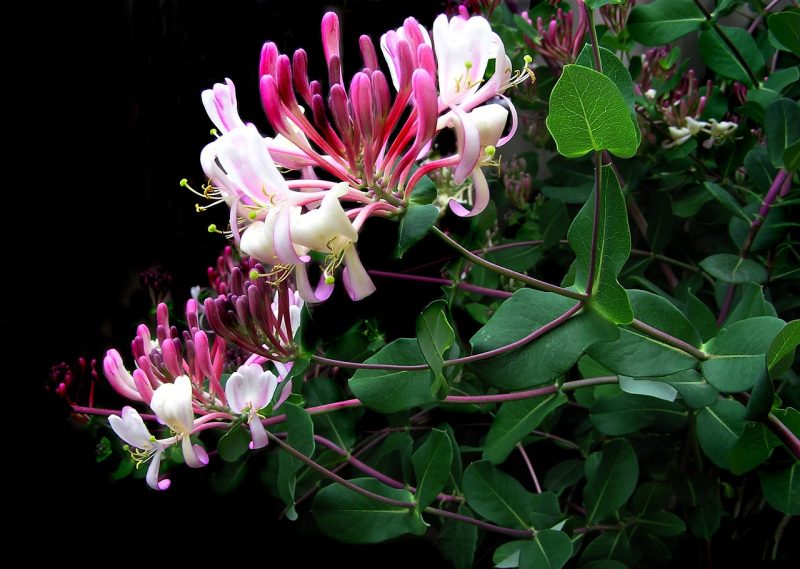
When discussing winter flowers in Texas, winter honeysuckle is not to be overlooked. This deciduous shrub is not just a visually appealing addition to gardens; it also brings delightful fragrance during a time when many other plants are dormant. The small, creamy-white to pale yellow blooms appear in late winter and emit a sweet scent that fills the air, attracting wildlife and providing a sensory experience.
Winter honeysuckle is particularly favored for its hardiness and adaptability. It can tolerate a range of soil conditions as well as both sun and shade, making it an excellent choice for various garden settings. Its sprawling growth habit makes it ideal for use as a border plant or as a backdrop in mixed ornamental beds.
One of the remarkable characteristics of winter honeysuckle is its ability to thrive in colder temperatures. Even when the snows of winter blanket the ground, this resilient plant will often be one of the first to bloom as the season transitions towards spring. Additionally, it provides excellent cover for songbirds during winter months, thus enhancing the biodiversity of your garden.
To foster optimal growth, winter honeysuckle should be pruned after flowering to maintain its shape and encourage new growth. With its fragrant blooms and ecological contributions, this hardy shrub is a beautiful addition to any Texas winter garden.
Winter Jasmine (Jasminum nudiflorum)
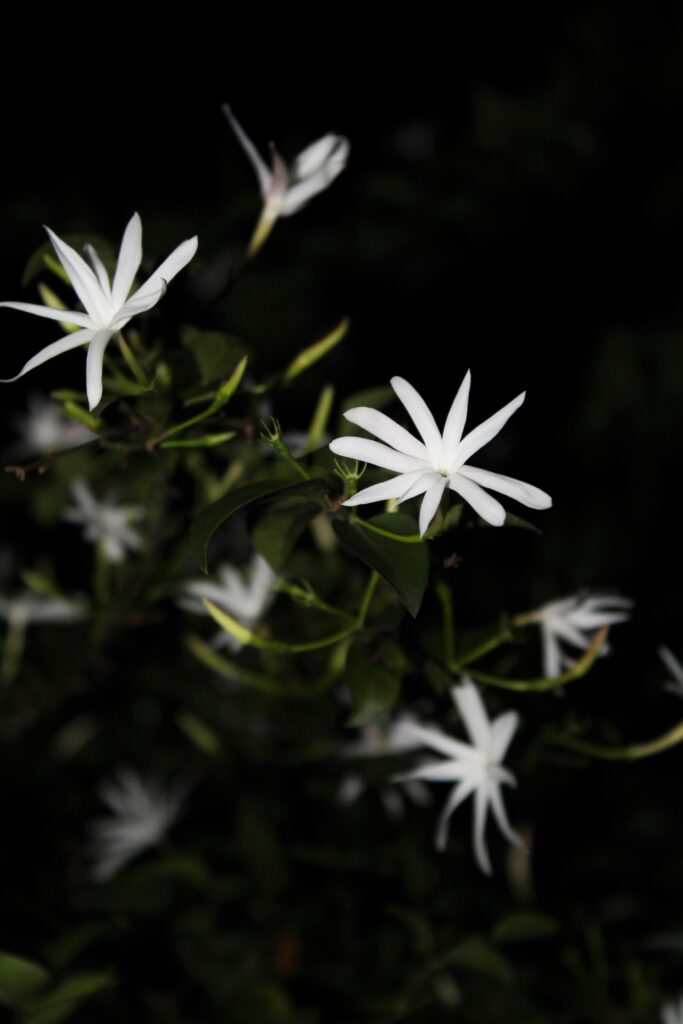
Winter jasmine is another spectacular winter flower that brightens up gardens and landscapes throughout Texas. With its star-shaped yellow flowers that bloom in droves on long, arching stems, winter jasmine can create a stunning display against a backdrop of dormancy. This vigorous vine is particularly noted for its cheerful color, which can uplift the spirits during those long winter months.
This plant thrives in well-drained soil with full sun to partial shade. One of the advantages of winter jasmine is its ability to bloom early, often starting in late December and continuing through March. The blooms can be a vibrant source of color, providing a welcome sight against the typically gray winter sky.
While winter jasmine is often used as a ground cover in gardens, it can also be trained to climb trellises, fences, or walls, making it versatile for various garden designs. Given its rapid growth rate, it can quickly fill in spaces and create a lush environment, making it especially effective in erosion control.
Additionally, winter jasmine is relatively low-maintenance. Once established, it requires little attention and can tolerate drought conditions, making it an excellent option for water-wise gardening in Texas. Its low upkeep, in combination with its stunning visual appeal, makes winter jasmine not only a practical choice but also a delightful addition to winter gardens.
Christmas Rose (Helleborus niger)
Embodying the essence of winter floral beauty, the Christmas rose (Helleborus niger) stands out as a sophisticated perennial that brings elegance and charm to gardens during the colder months. Known for its delicate, cup-shaped white flowers that often bloom around Christmas time, this perennial thrives in shaded or partially shaded areas, providing year-round interest with its evergreen foliage.
Despite its name, the Christmas rose is not a true rose but rather part of the buttercup family. It thrives in well-drained, humus-rich soil and can tolerate drought once established, which is ideal for Texan gardeners dealing with variable winter conditions. The blooms typically last for several months, often extending into early spring, making it a valuable asset for those looking to extend their garden’s flowering season.
One of the most appealing aspects of the Christmas rose is its adaptability to various garden settings. It works beautifully in borders, woodland gardens, and even in containers. Additionally, it is relatively low-maintenance, requiring only occasional watering during prolonged dry spells.
This elegant flower is not just a winter gem; its vivid blooms can attract a variety of pollinators such as bees, adding to the ecological diversity of your garden. With its graceful appearance and hardiness, the Christmas rose makes a perfect addition to any winter garden in Texas, proving that beauty can flourish even in the cold.
Primroses (Primula spp.)
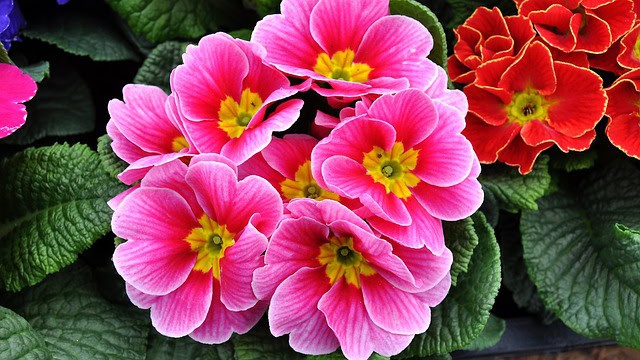
Primroses are a delightful herald of spring that can often be seen blooming throughout winter in suitable Texas climates. With their bright, cheerful flowers ranging in color from pastel hues to vivid shades, they bring a lively spirit to winter gardens. These charming perennials can be found in garden centers in early winter, ready to add a splash of color to any planting scheme.
Primroses prefer locations that receive dappled sunlight or light shade, making them perfect for the margins of flower beds or under trees. These flowers thrive best in rich, well-drained soil and enjoy consistent moisture, particularly during dry spells. Gardeners can aid their growth by adding a layer of mulch to help retain moisture and suppress weeds.
Additionally, the blooming period of primroses can extend several weeks, and they often encourage a flock of pollinators, including bees and butterflies, into the garden. These lively blooms are not only visually appealing but also play a vital ecological role, enhancing the garden’s health.
One intriguing aspect of growing primroses in Texas is their tolerance for slightly cooler temperatures; they are often able to flower even when nighttime temperatures dip. This resilience can lead to a prolonged blooming season, giving gardeners the chance to enjoy their beauty from winter through early spring. Primroses are a beloved choice for gardens, providing vibrant patches of color amidst the winter landscape.
Sweet Alyssum (Lobularia maritima)
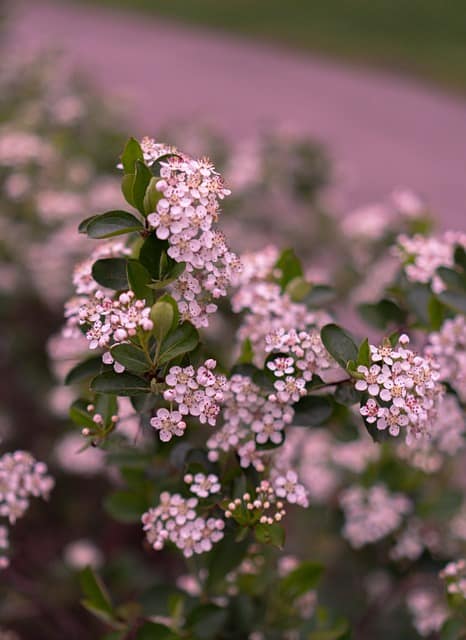
Sweet alyssum is a charming annual flower that delights with its small, fragrant white, purple, or pink blooms. This delightful flower is an excellent choice for winter gardens in Texas because of its exceptional cold tolerance and prolific blooming. Sweet alyssum often produces dense mats of flowers that create a stunning ground cover, adding both beauty and fragrance to garden beds, borders, and containers.
This flower thrives in full sun and well-drained soil, requiring minimal care once established. Sweet alyssum is especially known for its remarkable ability to self-seed, allowing it to return year after year with very little maintenance. The cascading habit of sweet alyssum makes it ideal for hanging baskets or as a trailing companion plant in mixed arrangements.
In addition to its aesthetic benefits, sweet alyssum serves a critical role in the winter ecosystem. Its clusters of tiny blooms attract beneficial insects and pollinators during cooler months when many other flowers are absent. This ecological value makes sweet alyssum an essential component of a winter garden, promoting biodiversity even during Texas’s colder periods.
Another notable feature of sweet alyssum is its fragrant blossoms, which have the potential to perfume the garden, creating a delightful sensory experience for gardeners and visitors alike. With its resilient nature and beautiful blooms, sweet alyssum stands as a testament to the idea that winter flowers can bring joy and fragrance to Texas landscapes, enhancing the garden’s charm during the chilly months.
Rainbow Pink Dianthus (Dianthus chinensis)

Rainbow pink dianthus, also known as China pink or rainbow dianthus, is a delightful perennial that showcases a burst of color during the winter months. Recognizable for its fringed petals and vibrant hues—ranging from soft pinks to bright reds and whites—this flower adds a cheerful element to winter gardens while thriving in the temperate Texas climate.
This dianthus variety prefers full sun but can tolerate some light shade, making it a versatile addition to flower beds, borders, and container gardens. The rainbow pink dianthus thrives in well-drained soils and is relatively drought-tolerant once established, which is beneficial for Texas gardeners dealing with variable watering needs during the winter.
One of the most compelling features of the rainbow pink dianthus is its ability to bloom in cycles. Deadheading spent flowers promotes a more extended blooming period, often encouraging new growth and vibrant flushes of color multiple times throughout winter and into spring.
Additionally, these dianthus flowers have a sweet, clove-like fragrance that can attract pollinators such as bees and butterflies, enriching the garden ecosystem during the winter months. With its lovely appearance and adaptability, rainbow pink dianthus is a charming choice for adding seasonal vibrancy to Texas landscapes.
Daisies
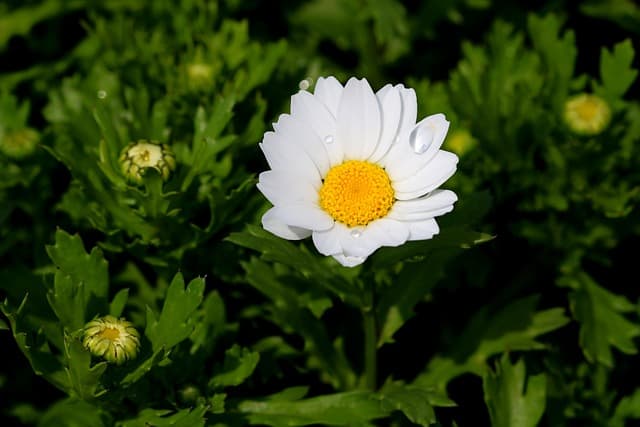
Daisies are classic winter flowers that can enliven the Texas landscape during cooler months. Known for their iconic white petals and sunny yellow centers, daisies—including varieties such as the Shasta daisy (Leucanthemum × superbum) and the African daisy (Osteospermum spp.)—offer timeless beauty and cheerfulness to any garden.
These flowers thrive in full sun, requiring well-drained soil and moderate moisture to flourish. Shasta daisies, specifically bred for extended blooming, typically flower from late winter through spring and can develop into impressive clumps, making them a focal point in borders and flower beds. African daisies, with their vibrant colors—including purple, yellow, and orange—are particularly known for their resilience against drought and can bloom intermittently even in winter.
Daisies also attract various pollinators, including bees and butterflies, contributing to a healthy garden ecosystem. Their simple, charming structure makes them an excellent cut flower, adding brightness and a cheerful touch to indoor arrangements during the winter season.
Thanks to their hardy nature, daisies can easily adapt to different garden settings and climates, ensuring an enduring presence in Texas gardens. These flowers embody the ability to make winter landscapes more inviting, reminding us that warmth and brightness can still thrive even on the chilliest days.
Dahlia
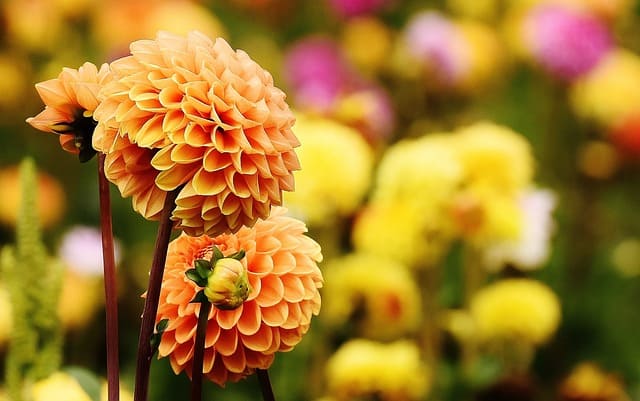
Dahlias are typically celebrated as summer flowers, but certain varieties can be successfully grown in mild winter conditions in Texas. Known for their stunning floral display and diverse shapes, colors, and sizes, dahlias can add a dramatic flair to winter gardens. While most dahlia varieties require replanting each spring due to frost sensitivity, some, particularly tuberous varieties, can be treated as annuals to extend blooms through fall and into early winter.
These exquisite flowers thrive in full sun and prefer well-draining soil rich in organic matter. Proper watering is essential, particularly during the initial establishment phase, as dahlias prefer consistent moisture but can suffer from root rot in overly soggy conditions. Gardeners can utilize mulch to maintain soil temperature and moisture levels, creating favorable growing conditions.
Dahlias come in various types, including dinner-plate, cactus, and pompon varieties, each providing unique textures and visual interest. While it’s important to check the specific variety for its cold tolerance, many can thrive in warmer microclimates found throughout Texas.
In addition to their breathtaking appearance, dahlias attract beneficial pollinators and can coexist beautifully with other winter flowers. Their long-lasting blooms make them ideal for cutting gardens, adding elegance to winter bouquets for display indoors.
Zinnia
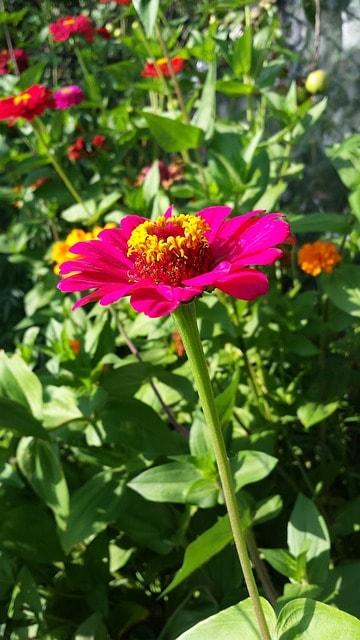
Zinnias are often recognized for their bold colors and sturdy petals, making them a favored choice among gardeners eager for winter blooms. Although typically associated with the warmer seasons, certain zinnia varieties can thrive and produce colorful displays in mild Texas winters, particularly when planted during the fall months.
These cheerful flowers are remarkably versatile, reaching heights that span from low-growing types like the Button Zinnia to taller varieties like the Zinnia elegans. Their vibrant blooms explode in shades of red, orange, yellow, purple, and pink, offering a lively contrast against winter’s typically muted background. Zinnias perform best in full sun and well-drained soil, thriving in conditions that allow air circulation around their foliage, which helps prevent fungal diseases.
One of the best aspects of zinnias is their ability to attract an array of beneficial pollinators, including butterflies and bees, which are drawn to their bright colors and nectar-rich flowers. This enhances garden biodiversity, making zinnias not just beautiful but ecologically significant in the winter landscape.
Additionally, zinnias are relatively low-maintenance and can withstand brief cold snaps, making them hardy candidates for the winter garden. For those seeking to add pops of color amidst winter’s chill, zinnias serve as a delightful option that can elevate the season with their cheerful blooms and vibrant energy.
Tulips
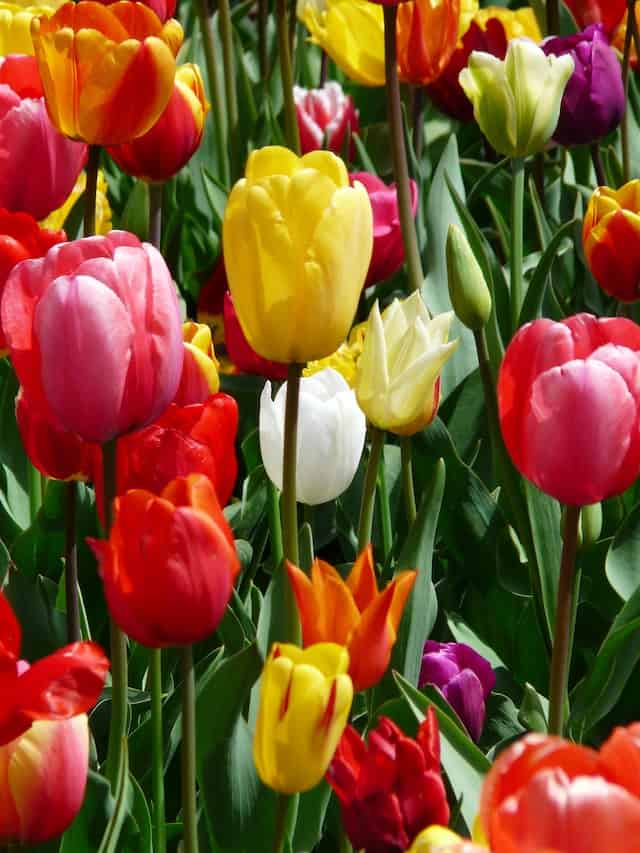
Tulips are cherished as one of the quintessential spring flowers, yet they have a dedicated following in winter gardens. When planted in the fall, they can bring an early burst of color to Texas gardens, especially as mild winters allow for successful overwintering. The iconic cup-shaped blooms come in virtually every color imaginable, creating a striking visual feast that has made them a longstanding favorite among gardeners.
These bulbs thrive in well-drained, slightly acidic soil, and prefer full sun to partial shade. During their dormant phase in winter, tulips require a cold period to ensure proper flowering, making the winter chill beneficial for their development. When temperatures warm in late winter, tulips emerge, typically blooming between late March and early April.
Tulips can serve as wonderful companions to other winter flowers, providing texture and variety in garden compositions. Planting them in groups or ‘drifts’ enhances their visual impact, allowing the full effect of their blossoms to shine as they sway in the spring breeze.
Besides their aesthetic appeal, tulips are relatively low-maintenance once planted, requiring minimal care beyond ensuring appropriate moisture levels until they bloom. For Texas gardeners, they represent a bridge between winter and spring, heralding the changing seasons with their elegance and beauty.
Marigolds
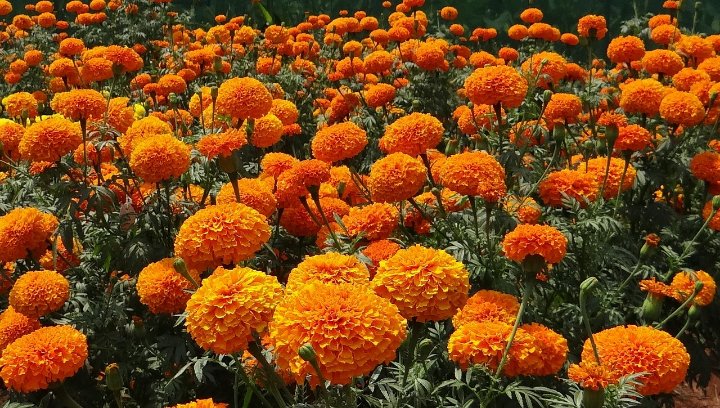
Marigolds are widely adored for their vibrant flowers and pest-repelling properties, making them excellent companions in any garden. While most commonly associated with summer and fall, certain varieties of marigolds can bring bursts of color even during the winter months, especially in warmer parts of Texas.
These annual flowers are known for their sunny yellow, orange, and red blooms, which can effectively brighten up winter landscapes. French marigolds (Tagetes patula) and African marigolds (Tagetes erecta) are popular varieties that bloom vigorously, often continuing their show until the first frost, provided the weather remains mild.
Marigolds are not only lovely but practical as well. They are often planted with vegetables to deter harmful pests like nematodes and aphids, making them a valuable addition to edible gardens. In Texas, where gardening can sometimes be challenged by pest issues, marigolds contribute to a healthier growing environment by harnessing their natural repellent properties.
These resilient flowers prefer full sun and can adapt to various soil types, provided they have adequate drainage. Marigolds are relatively drought-tolerant once established, making them ideal choices for low-water gardens during the milder winter. Their rapid growth and prolific blooming can cover bare patches, ensuring the garden remains lively.
What’s more, marigolds are favorable for attracting pollinators, such as bees and butterflies, helping to enhance the ecological balance in the garden. With their cheerful disposition and practicality, marigolds exemplify how vibrant beauty can thrive in winter gardens across Texas.
Daffodils
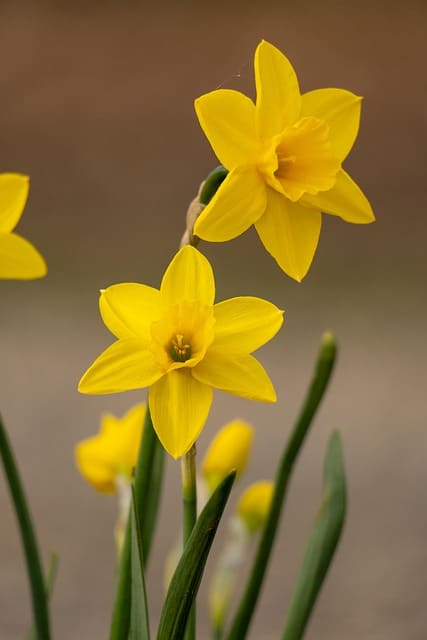
Daffodils, known scientifically as Narcissus, are among the first blooms to herald the arrival of spring, making them excellent choices for winter gardens. With their iconic trumpet-shaped flowers and bright yellow or white petals, daffodils inject a burst of cheerfulness into landscapes even when winter’s chill lingers. In Texas, fall planting of daffodil bulbs allows these hardy perennials to establish roots before cold temperatures arrive, ensuring they thrive in early spring.
These resilient flowers prefer well-drained soil and full sun but can tolerate partial shade, making them versatile for various garden settings. Daffodils are highly valued not only for their beauty but also for their robustness; they are deer-resistant and unfriendly to pests, such as rabbits, which makes them an excellent choice for those with wildlife concerns.
The blooming period for daffodils typically begins in late winter to early spring, depending on the specific variety and the region within Texas. Varieties such as the early-blooming ‘February Gold’ or the classic ‘King Alfred’ provide options to suit different garden aesthetics. Blooms can last for several weeks, and once they fade, the foliage continues to nourish the bulbs, ensuring vibrant blooms for the following year.
In addition to their ornamental value, daffodils symbolize renewal and hope, making them timely reminders of nature’s resilience. For a burst of early color that brings joy after winter’s grey, daffodils stand out as a premier choice for Texas gardens.
Lily
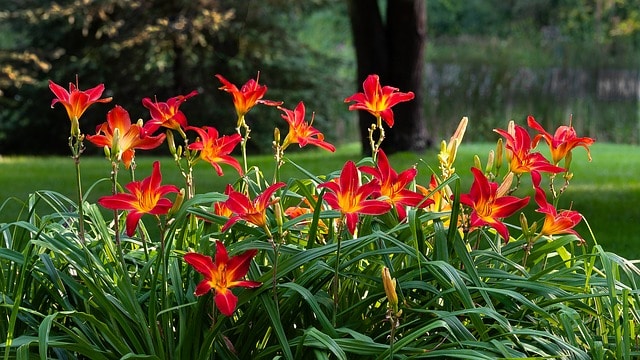
Lillies are another stunning category of winter flowers that, while often celebrated as summer bloomers, can surprise gardeners in Texas with winter vigor. Several dahlia and Asiatic lily varieties can be planted in the fall, ready to bloom in early spring. Lilies are known for their striking elegance; with a variety of species displaying large, fragrant flowers in almost every color imaginable, they create a dramatic focal point in any landscape.
These perennial flowers thrive in well-drained soil with plenty of sunlight. While lilies prefer full sun, they can also tolerate some partial shade, particularly in the hotter regions of Texas. Planting bulbs in groups or clusters maximizes their visual impact and creates a stunning display.
Lillies can bloom at different times, providing ongoing color throughout the season. The Easter lily (Lilium longiflorum) is particularly favored for its association with spring, though Texan gardeners can embrace numerous types, including Asiatic and Oriental lilies, to suit their garden’s theme.
Beyond their beauty, lilies attract various pollinators, including bees and hummingbirds, enhancing the ecological value of any garden. Their striking presence and lovely fragrances make them not just an aesthetic choice but also a fragrant addition to winter floral displays. With their stately appearance, lilies serve as an emblem of grace and elegance, suitable for special occasions or casual garden gatherings.
Black-Eyed Susans
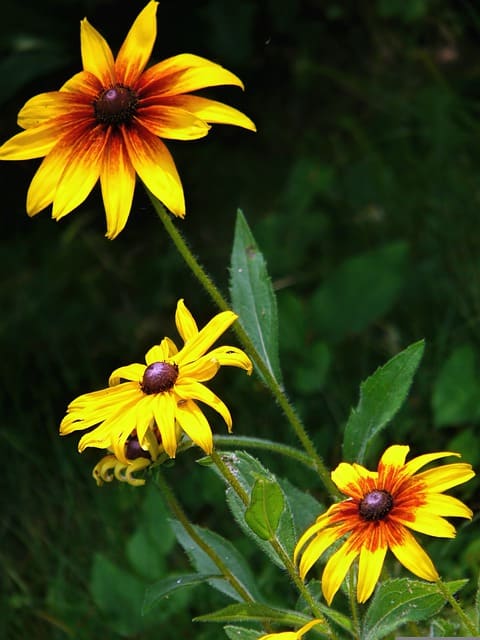
Black-eyed Susans (Rudbeckia hirta) are renowned for their golden-yellow petals and deep brown centers, creating a visual spectacle that brightens gardens even during winter. While these flowers are typically considered summer perennials, they can often be found blooming late into the season in the warmer regions of Texas. With their rustic charm and vibrant hue, black-eyed Susans are hardy, dependable flowers that offer beauty and resilience in winter gardens.
These robust flowers adapt well to a variety of soil conditions, thriving in full sun to partial shade. They can withstand drought and are known for their ability to flourish in poor soils, making them perfect for low-maintenance gardens. Black-eyed Susans bloom profusely from late summer into fall and can persist into early winter in appropriate conditions, providing an accessible source of color and habitat for wildlife.
As a native Texas flower, black-eyed Susans support local ecosystems by attracting pollinators, such as bees and butterflies. Their bright blooms often stand out against the muted tones of a winter garden, providing a cheerful reminder of nature’s enduring beauty.
Additionally, these flowers produce seeds that feed various birds throughout the winter, adding another layer of ecological significance. The visually striking contrast of their radiant yellow petals against winter’s drab landscape makes black-eyed Susans a must-have for anyone looking to enhance their garden during chilly months.
Coneflowers
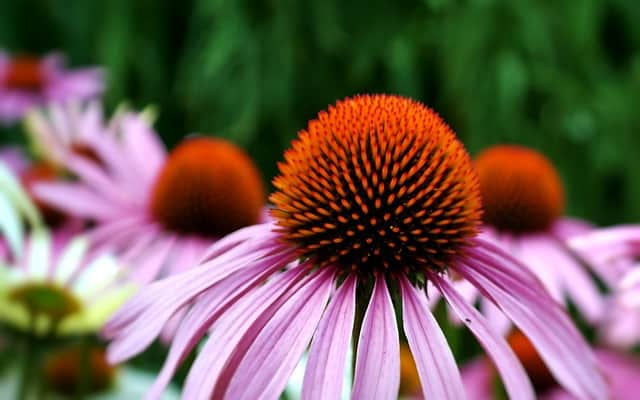
Coneflowers, scientifically known as Echinacea, are truly remarkable winter flowers that can add beauty and resilience to Texas gardens. Renowned for their daisy-like structure and vibrant colors, including purples, pinks, and whites, these hardy perennials have become increasingly popular among gardeners. Their bold, central cones surrounded by a sea of colorful petals create visually striking blooms that stand tall above varied foliage.
Coneflowers thrive in full sun and are particularly suited to Texas’s diverse climate, where they can withstand heat and drought conditions once established. This makes them an excellent choice for low-maintenance gardens. They prefer well-draining soil and can adapt to a range of soil types, further enhancing their versatility in plant selection.
One of the most significant benefits of coneflowers is their ability to attract pollinators, particularly butterflies and bees, making them a perfect addition for those looking to create a vibrant ecosystem. They add an element of life to winter gardens, proving that even in cooler weather, the landscape can be rich and teeming with activity.
Coneflowers bloom in late spring and into the summer, and they can continue to produce flowers until the first frost, allowing for an extended display. The seed heads, which remain after the petals have dropped, provide food for birds during the winter months, making these flowers valuable for wildlife as well as for aesthetic enjoyment. Their striking beauty and ecological benefits make coneflowers an ideal choice for Texan gardeners aiming to cultivate a stunning winter landscape.
FAQ
What are some tips for winter gardening in Texas?
When it comes to winter gardening in Texas, several tips can help you maintain a healthy and colorful landscape:
Know Your Hardiness Zone: Texas has a range of USDA hardiness zones, so understanding your local zone will help you select the appropriate flowers that can thrive in your area.
Choose Native Plants: Native flowers, like black-eyed Susans and coneflowers, tend to be more resilient and better suited to cope with local weather conditions and pests.
Watering Practices: Although winter rainfall can be minimal, it is essential to ensure young plants receive adequate moisture without overwatering, which can lead to root rot.
Mulching: Adding a layer of mulch helps regulate soil temperature, retain moisture, and suppress weeds, which can be particularly beneficial during colder months.
Keep an Eye on Frost Dates: Although some winter flowers are more tolerant to frost, understanding the expected frost dates in your area can inform planting and protection decisions.
Can I plant new flowers during winter in Texas?
In general, winter in Texas is not the traditional planting season. However, certain hardy varieties like pansies, violas, and snapdragons can thrive if planted during this time, especially in milder regions. Fall is typically the best time for planting bulbs like daffodils and lilies, which will bloom beautifully in spring.
How do I care for winter flowers?
Winter flowers often require specific care to thrive. Make sure they receive the proper amount of sunlight, continue to observe watering needs, and promptly remove any dead foliage or blooms to encourage new growth. Additionally, applying a balanced fertilizer before blooming can enhance the flower’s vitality and vibrancy.
When can I expect my winter flowers to bloom?
The blooming period for winter flowers varies by species and can be influenced by the local climate. For instance, daffodils and tulips typically start blooming in late winter to early spring, while pansies can provide color throughout the winter months if the temperatures are moderate. Regularly monitoring your plants will help you gauge their blooming cycles.


